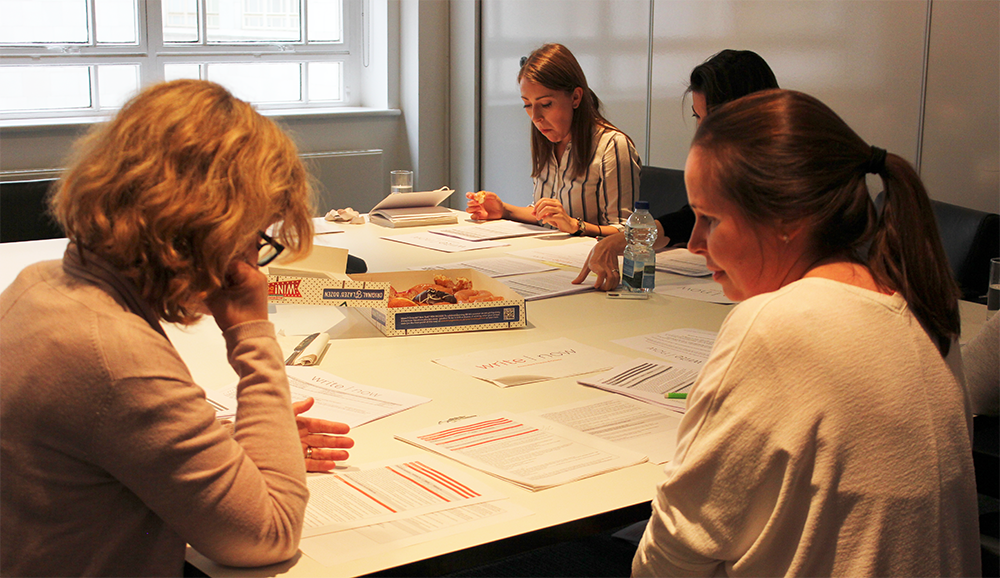- Home |
- Search Results |
- WriteNow 2017: Your Feedback

We received over 1,700 applications to WriteNow this year, with 150 places on offer. While we can’t give individual feedback to everybody, here are a few things we liked most about the submissions we read:
Less is more
Some of the best writers kept it simple. They weren’t overly descriptive with language and didn’t use too many adjectives or adverbs. This made the story feel more natural.
Stand out from the crowd
The best writing had something fresh and new about it – maybe an unusual setting, or a different way of telling a familiar story. The best stories didn’t overdo this, and weren’t too complex. Often the simplest stories with fundamentally human themes are the most engaging.
Work on the pitch
We know that writing a short synopsis or pitch of your book can be really tricky, and this is usually something that literary agents will help you with. The best responses to the question ‘what is your book about?’ were:
- Concise, clear and to the point.
- Had a hook – too much information can be confusing, but a simple and intriguing message will immediately make us want to read more.
- Included the main plot, a summary of themes, a hint of an ending – and no more. Try looking at the back of a few published books in your genre to get a sense of how to structure a synopsis well. It should be a little longer than what you would normally read on the back of a book, but we don’t need to know everything
- Included a snappy positioning line - for example ‘think GRAVITY meets ONE DAY’.
- Were confident, but not over-confident (don’t tell us the book is going to be good, just show us).
- Identified their genre and readership, and made comparisons with other books. It can be helpful to read widely in your genre, so you can tell us which successful author’s fans might most enjoy your book and why.
- Highlighted what was unique about their writing. For example, “there are plenty stories about X, but this one comes from the angle of Y, which will especially appeal to Z readers”.
Be careful with dialogue
Dialogue can be particularly tricky to write in a way which sounds natural, and can be hard to follow if you’re reading a short extract. To develop your dialogue, try listening to how people talk in real life - notice the rhythm and how people ask questions.
Be careful not to overuse dialogue. Overly long passages of conversation can be difficult to follow, particularly for young readers, and don’t always further the plot or show character development.
Show, don’t tell
Aim to create an immersive reading experience, which feels natural and draws the reader in – and leaves them wanting more. Try not to think too much about how you convey the plot or story line in your sample of writing. The best submissions focused first and foremost on creating atmosphere and characters.
Less of the backstory
The best plots don’t need to be over-explained but can be referred to more subtly, which creates more pace and intrigue for the reader. It can be easy to try and pack too much information into a short extract.
Choose the right extract
We particularly liked extracts which were carefully chosen and were representative of the book as a whole. Finding an extract which clearly links to the description of the book provided worked well and avoided confusion.
Try not to start at a place where there are lots of characters who haven’t been introduced, and don’t feel that you need to use the full extract space. A shorter extract (not too short!) that ends after a clear, well-drawn scene is better than having to include a paragraph of your next chapter to fill space.
Make sure you proof-read
One thing that was very noticeable was when the writer had obviously changed their mind about something such as the tense or a character’s name, but hadn’t changed it in all instances. This can make for a confusing read, so it’s really important to double-check everything.
Non-fiction specific feedback
Be clear about how your narrative offers something new to the discussion. This can be political, emotional or philosophical, but have an answer to why you have chosen to write this book.
Make sure to demonstrate why there is an audience for your story. Non-fiction responds to the trends and status quo in a way that fiction doesn’t have to. For example, a proposal exploring BAME identity in the face of structural racism might point to the rise of activist currents that shed light on the same subject, such as Why Is My Curriculum White / Rhodes Must Fall / Black Lives Matter. Equally, an autobiographical proposal about the transgender experience might point to popular interest in hugely successful TV shows such as Transparent and Orange Is the New Black.
Finally, the originality of the idea and the profile of the writer can be just as important as the quality of writing itself. We would encourage writers to get their work out there in whichever way possible: in magazines, online blogs, newspapers, etc.